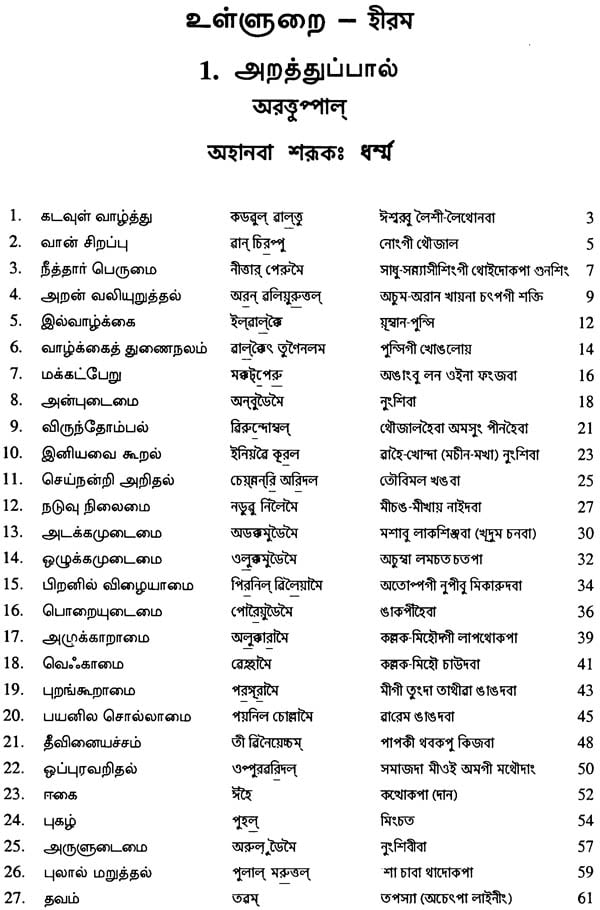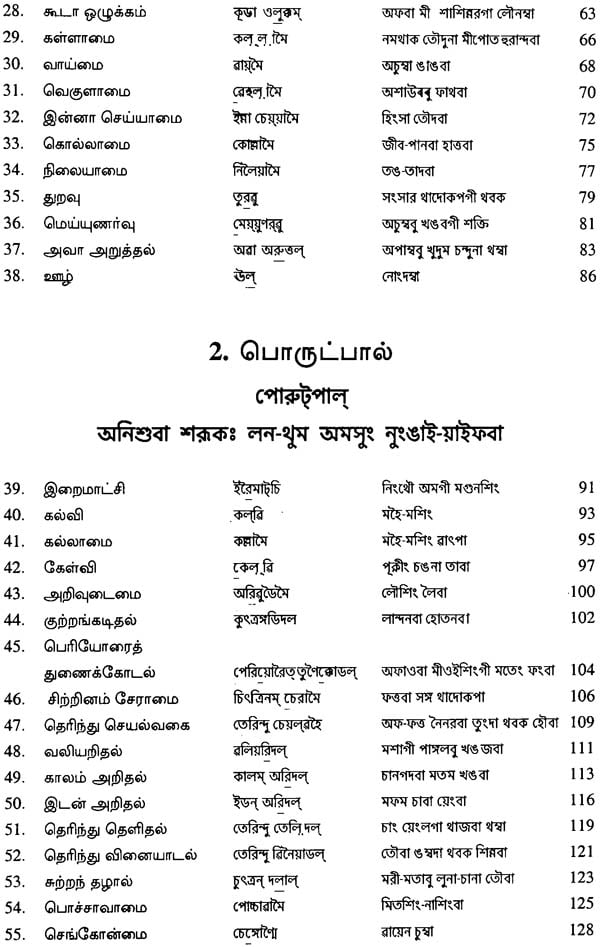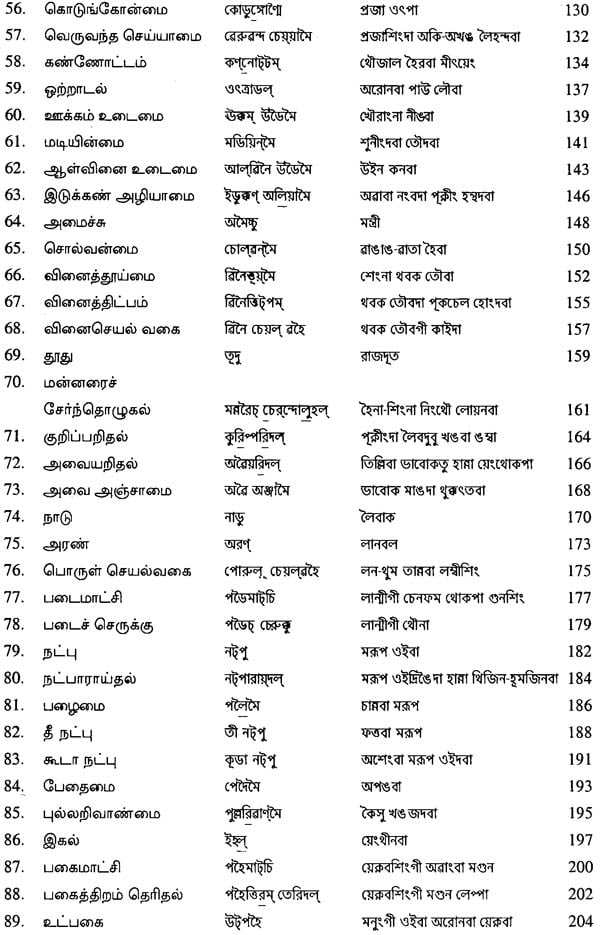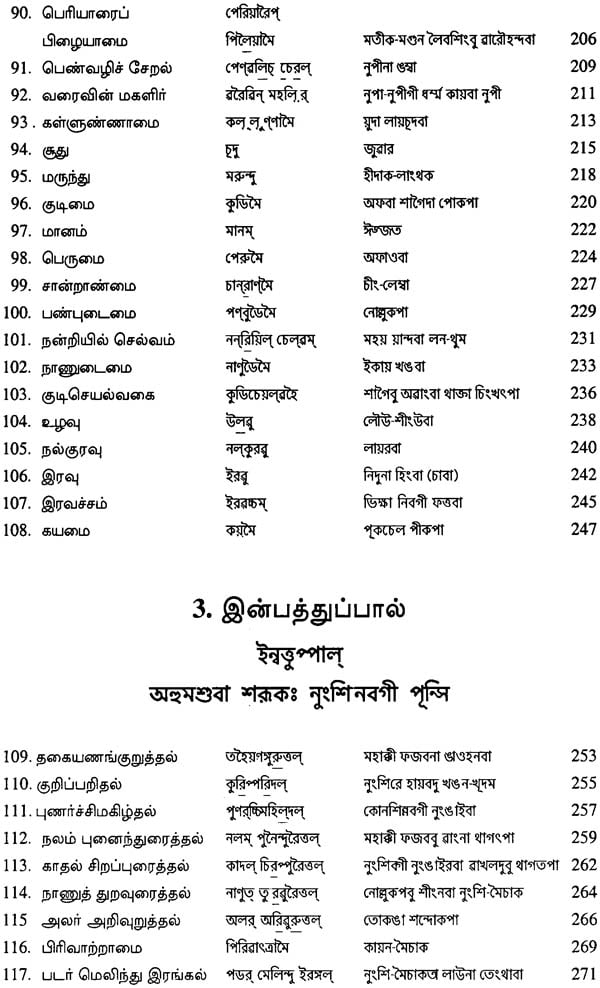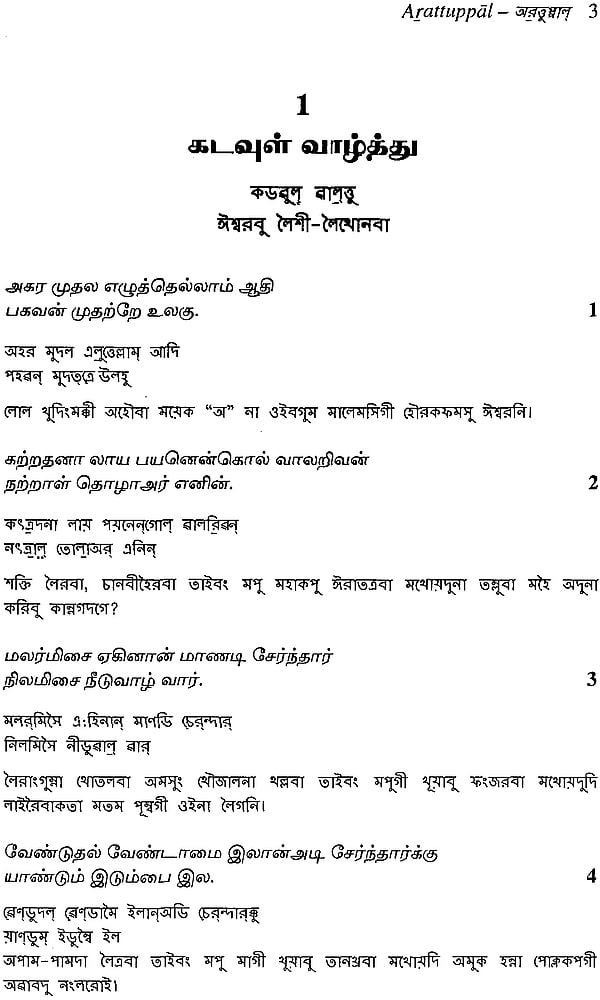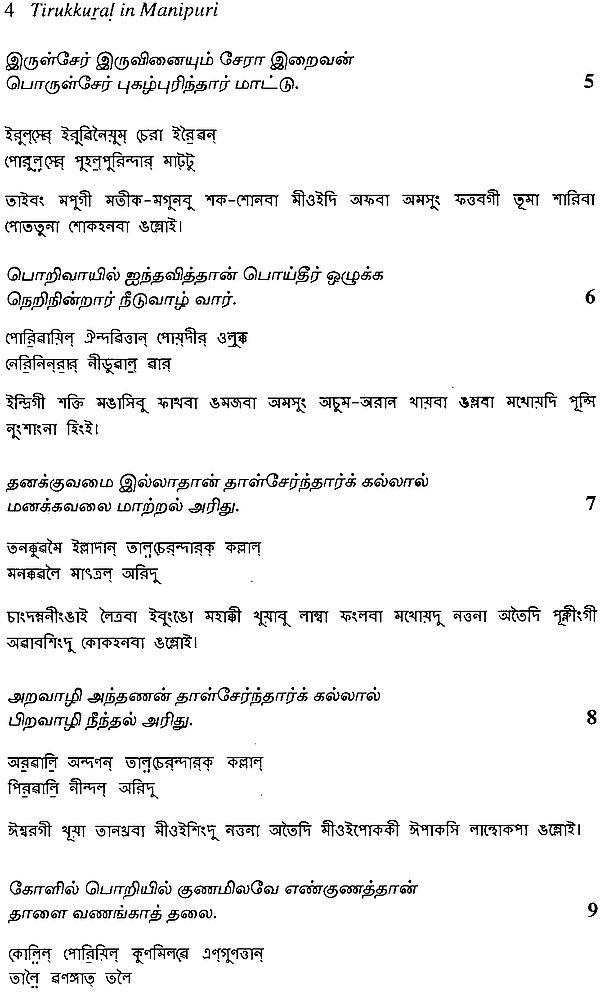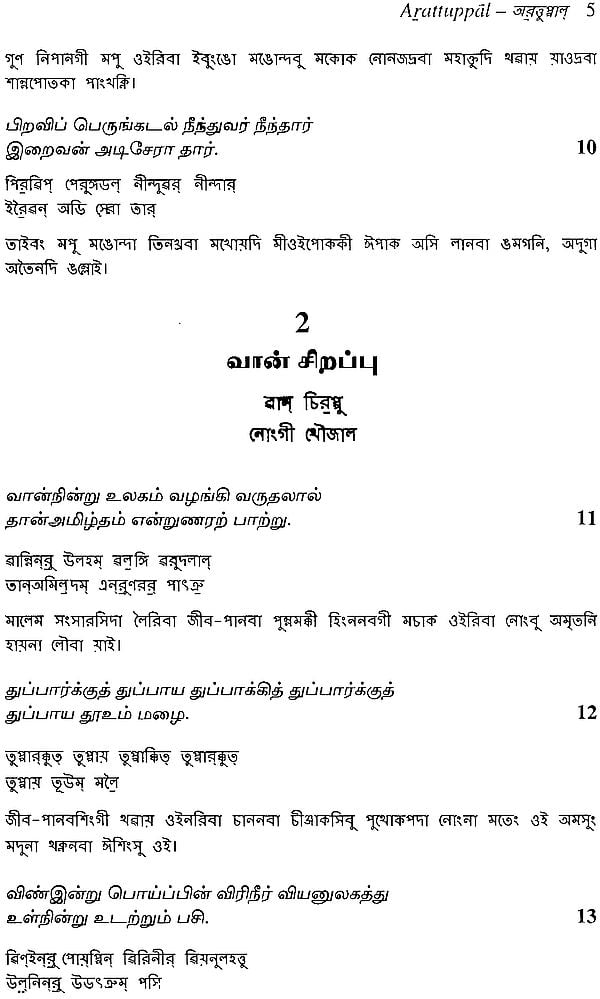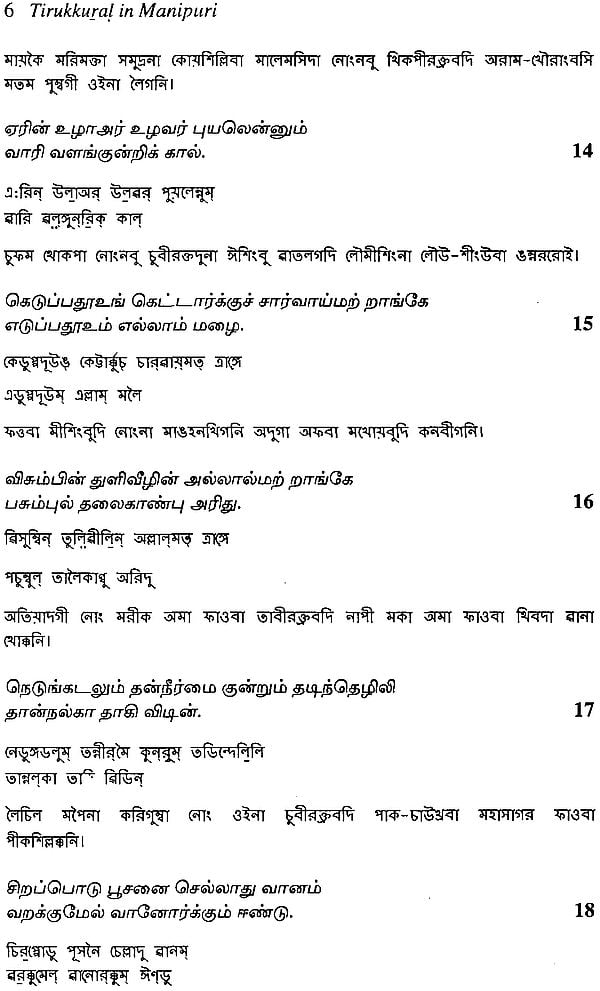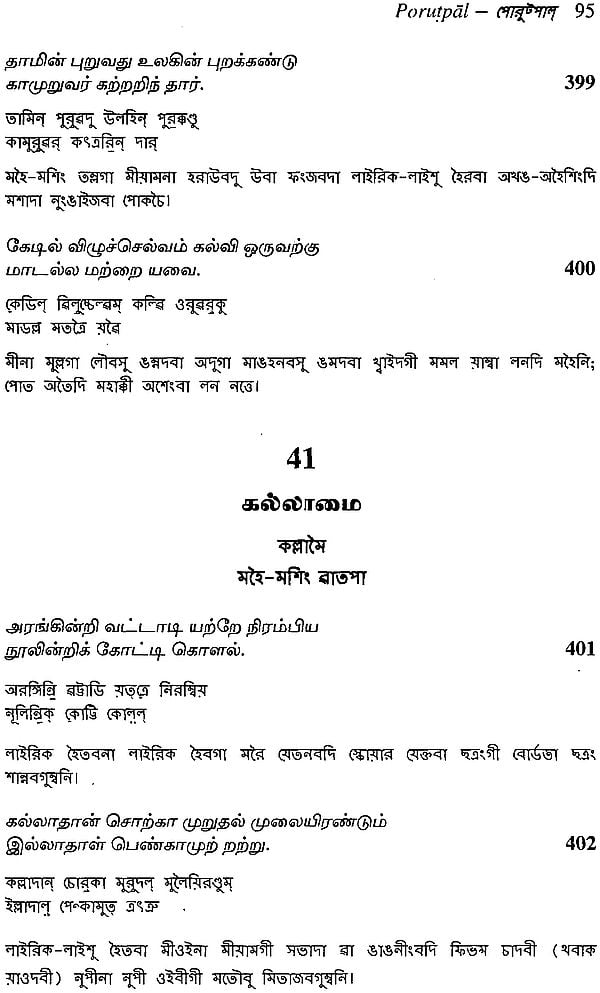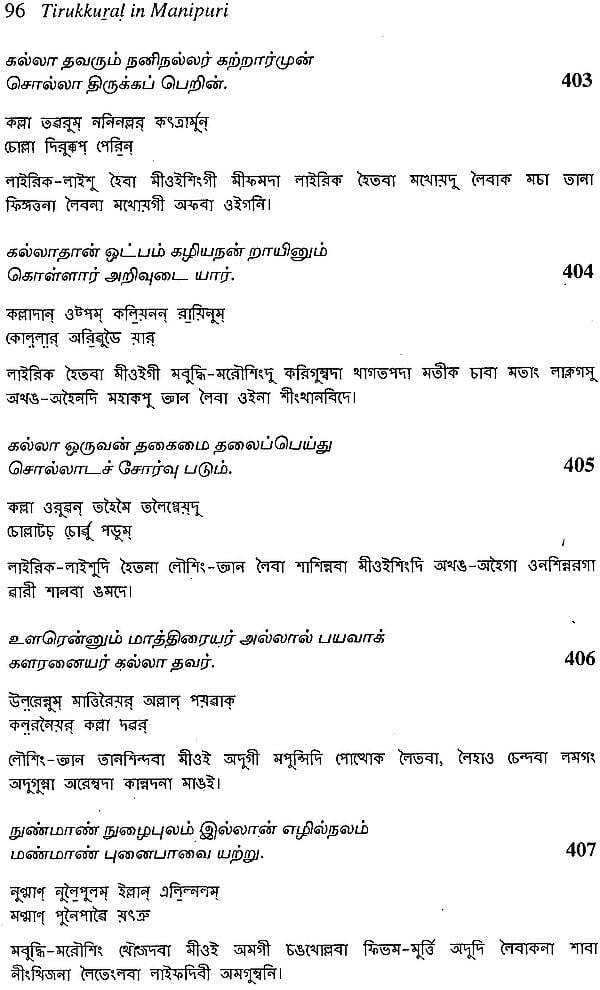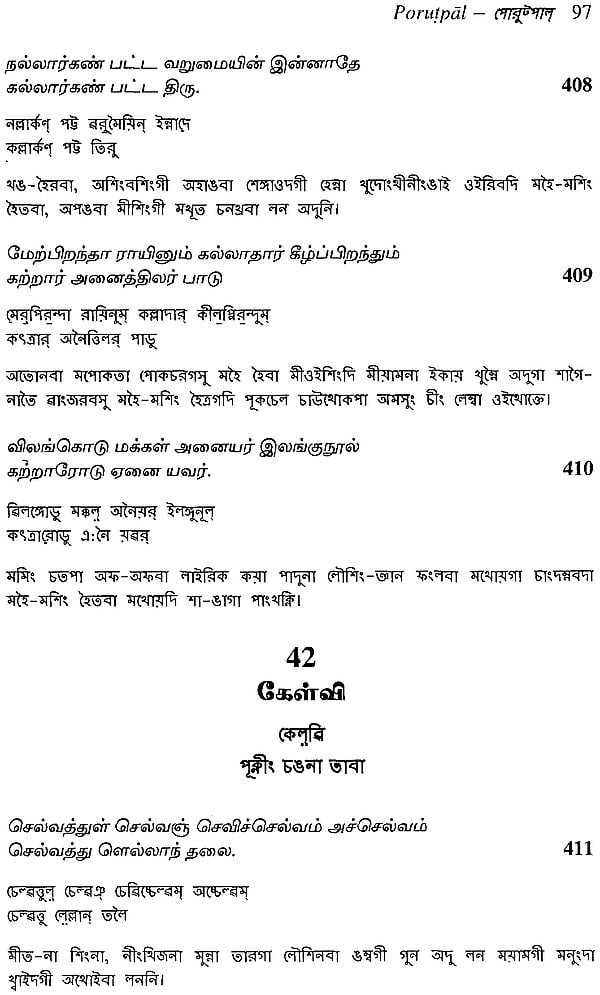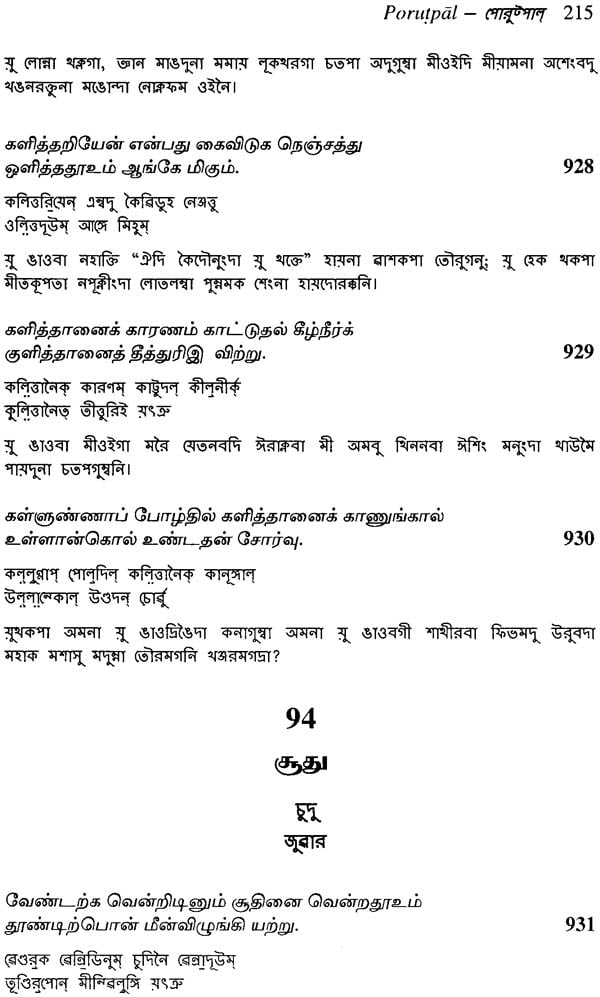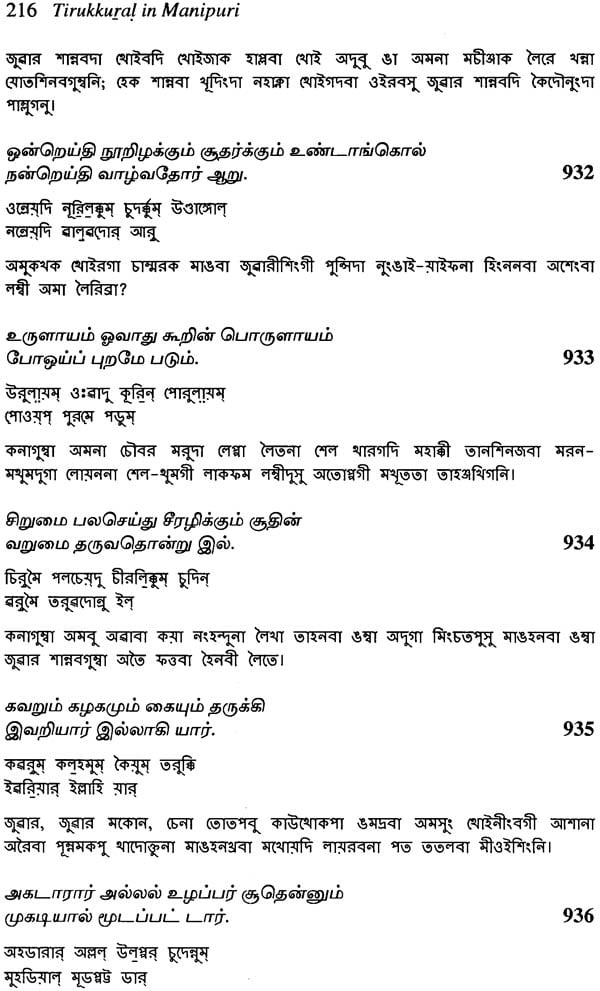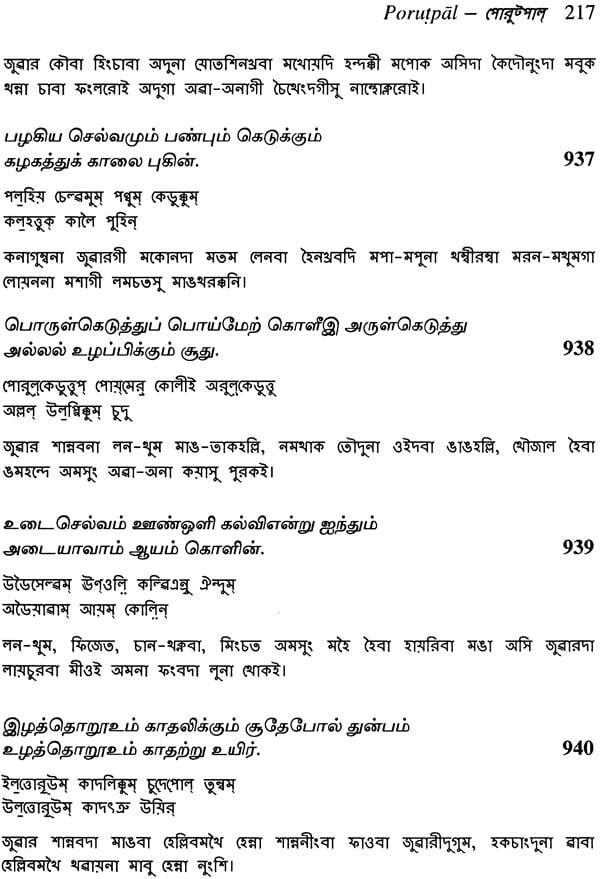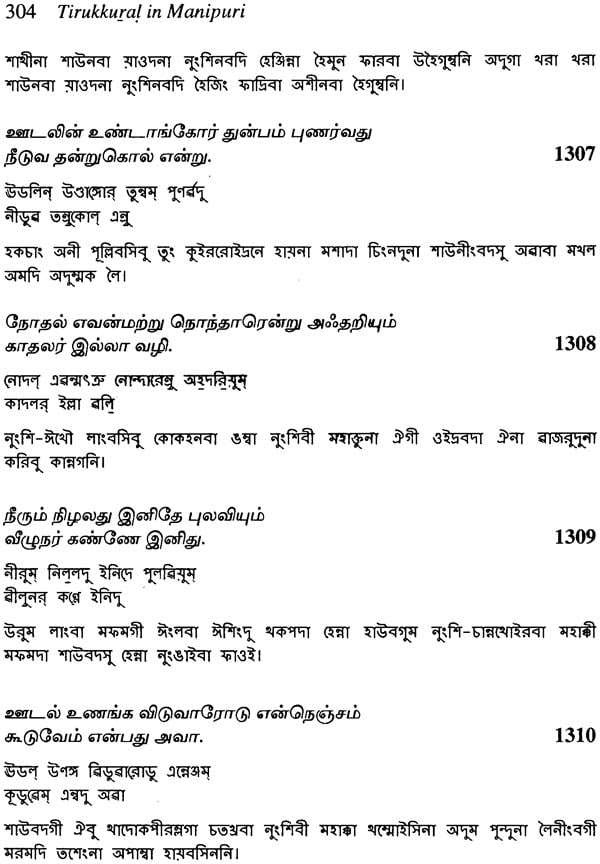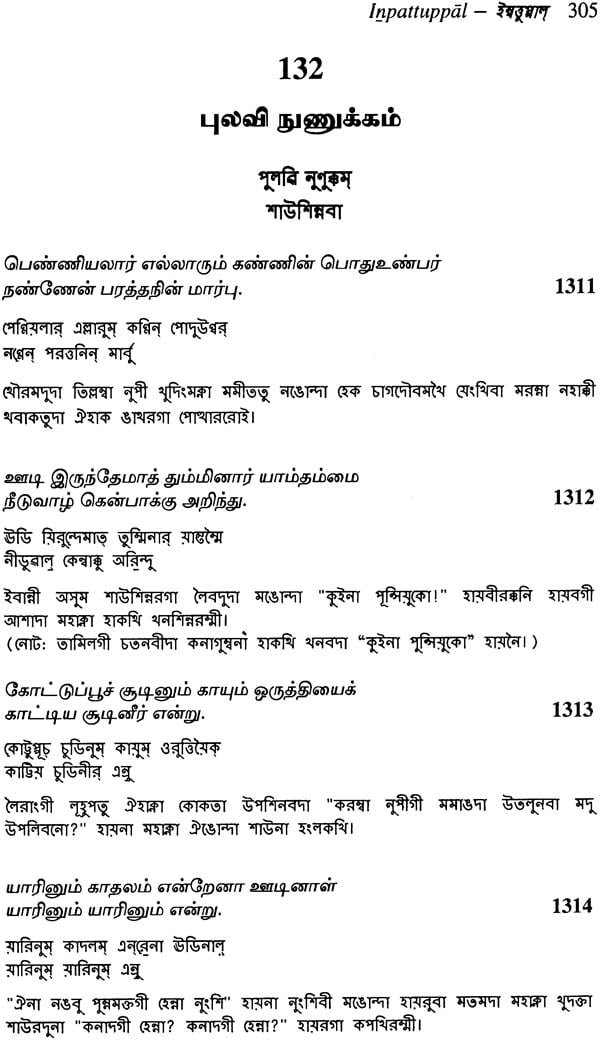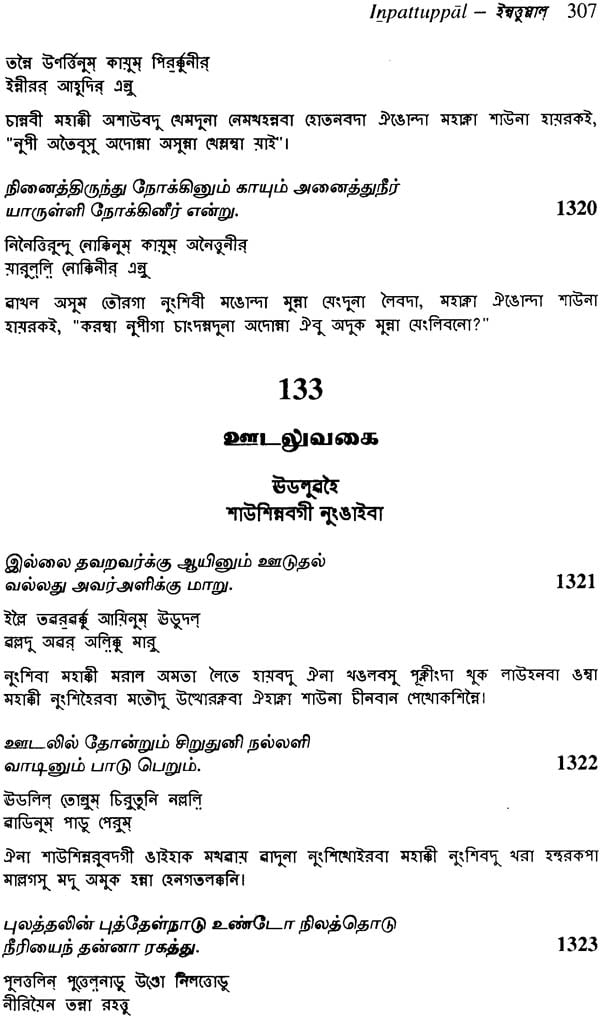
Tirukkural in Manipuri
Book Specification
| Item Code: | NAN503 |
| Author: | Soibam Rebika Devi |
| Publisher: | Central Institute of Classical Tamil, Chennai |
| Language: | Tamil Text With Transliteration and Manipuri Translation |
| Edition: | 2012 |
| ISBN: | 9788190800082 |
| Pages: | 334 |
| Cover: | Hardcover |
| Other Details | 9.5 inch X 6.0 inch |
| Weight | 610 gm |
Book Description
Ms. Soibam Rebika Devi was born in the year 1976 in Imphal, Manipur. She completed her B.Sc. Botany (1998) and M.Sc. Botany (2002) from Manipur University, M.A. Linguistics (2007) and M.A. Translation Studies (2010) from Annamalai University and underwent a ten-month Diploma Course in Tamil in the Southern Regional Language Centre of the Central Institute of Indian Languages, Mysore (2004-05). She started her career as a High School teacher in Manipur. At present she is working as a Resource Person in the National Translation Mission, Central Institute of Indian Languages, Ministry of Human Resource Development, Government of India, Manasagangotri, Mysore. She had worked as a Resource Person in two projects, viz., Preparation of 'A Semantically Classified Vocabulary: Tamil-English-Manipuri' and 'Editing the manuscripts of Multimedia Materials prepared in twenty Indian languages'. She has presented eight research articles in the National and International seminars and conferences. She has conducted a survey on Knowledge Text Scenario in Manipur and participated in six workshops organized by National Translation Mission for the translation of Knowledge Texts into Manipuri.
The Tamils may be justly proud of the fact that Tamil has won the status of a Classical language, the status it richly deserves and should have got long, long ago. The Central Institute of Classical Tamil (CICT), established in Chennai, has mapped out various plans including preparation of definitive editions of forty-one Classical Tamil texts and translation of these works into English and other major European languages as well as into major Indian languages and writing of a historical grammar of Tamil. Language being the autobiography of a people, our objective is to preserve and safeguard the invaluable treasure of the literary compositions in our language. If only we could delve into our past and recover the riches and wealth of the mighty treasure trove of Classical Tamil poetry, we will be amply rewarded by its lofty poetry, the poetry that strengthens and purifies the holiness of heart's affection and enlarges our imagination. Apart from these, reading the ancient Tamil texts such as Tolkappiyam, Ettuttokai, Pattuppattu, Tirukkural etc., provides a foundation for scholarship for the present and in this sense they do provide enlightened education.
It is heartening to write this foreword to the series of publications brought out by CICT, which I am sure, will do full justice to the masterpieces in Tamil without compromising on the quality of production. The Cankam corpus being a repository of our glorious culture, it behoves our present and future generations to study them and to convey their message and the vision of life embodied in them to the public at large. Let me, therefore, commend the series to the enlightened beings the world over.
Tirukkural, an immortal work of which the Tamils can be justly proud, is the most widely translated literary work in the world, probably next only to the Bible. As a philosophical treatise it is a treasure trove of wisdom. No wonder generation after generation has learnt valuable lessons for life from this great book of all time!
The present volume is the first translation of the celebrated work into Manipuri by Ms Soibam Rebika Devi, who learnt Tamil in the Southern Regional Language Centre of the Central Institute of Indian Languages, Mysore.
I am pleased to thank her for coming forward to undertake this project and bringing it to a successful completion with so much of devotion for the task on hand. In her case it was a labour of love. I am quite sure that her faithful translation captures the spirit and the grace of the original. I am thankful to the Department to Translation of the Institute and the Publication Division for their ready help in bringing out this precious volume.
Dr Purandeswari, Minister of State for Human Resource Development has been kind enough to write the foreword to this book. We feel privileged to have her foreword for this volume for which we express our sincere thanks and gratitude.
Tirukkural, a classic of 1330 rhymed couplets in 133 sections of 10 distiches each, composed in the first century BC is a philosophic poem dealing with the most elemental themes that govern human life: ethics, polity and love. The poem is in three distinguishable parts, Aram, Porul and Inpam. Part I Aram in thirty- eight chapters deals with virtue, moral and cosmic order. Beginning with a prologue in praise of the Almighty, this section expatiates on moral code of conduct, righteousness in private and public life and defines the virtues associated with family life and asceticism. Part II Porul in seventy chapters handles the theme of wealth, social life and political skill. This section is a comprehensive discourse on the rights and duties of the king, laws of good governance, duties of an able administrator and ways and means of protecting and guarding one's nation. Part III in twenty-five chapters, divide, into two broad subdivisions, discusses secret courtship and the joys of wedded love. This short section presents a number of captivating dramatic scenes, each of which is a brief analysis of the varying moods of lovers.
Tirukkural is at once a moral treatise and a work of art of the highest order. Music married to immortal verse, the poem employs a single metre, the Kuralvenpa, most appropriate to 'gnomic poetry. The first line of each couplet consists of four feet and the second line, three. This tight structure does not exercise any restraint on Valluvar' s imagination. Each couplet "snatches a grace beyond the reach of art."
Brevity, it is said, is the soul of wit. The wealth and richness of poet-prophet Thiruvalluvar's concise expressions can be seen in the manifold ways these lyrics have been interpreted by scholars and commentators from time immemorial.
